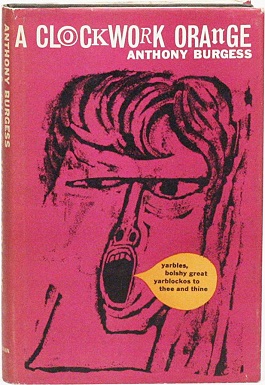
A Clockwork Orange is a dystopian satirical black comedy novella by English writer Anthony Burgess, published in 1962. It is set in a near-future society that has a youth subculture of extreme violence. The teenage protagonist, Alex, narrates his violent exploits and his experiences with state authorities intent on reforming him. The book is partially written in a Russian-influenced argot called "Nadsat", which takes its name from the Russian suffix that is equivalent to '-teen' in English. According to Burgess, the novel was a jeu d'esprit written in just three weeks.

John William Polidori was a British writer and physician. He is known for his associations with the Romantic movement and credited by some as the creator of the vampire genre of fantasy fiction. His most successful work was the short story "The Vampyre" (1819), the first published modern vampire story. Although the story was at first erroneously credited to Lord Byron, both Byron and Polidori affirmed that the author was Polidori.

Lucrezia Borgia was an Italian noblewoman of the House of Borgia who was the illegitimate daughter of Pope Alexander VI and Vannozza dei Cattanei. She reigned as the governor of Spoleto, a position usually held by cardinals, in her own right.

John Anthony Burgess Wilson, who published under the name Anthony Burgess, was a British writer and composer.
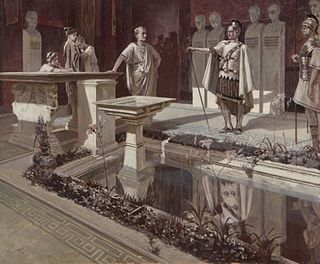
Aulus Plautius was a Roman politician and general of the mid-1st century. He began the Roman conquest of Britain in 43, and became the first governor of the new province, serving from 43 to 46.
This article contains information about the literary events and publications of 1816.
Miranda Jane Seymour is an English literary critic, novelist and biographer of Robert Graves, Mary Shelley and Jean Rhys among others. Seymour is a Fellow of the Royal Society of Arts. She elected to resign from the Royal Society of Literature in December 2023. She was formerly married to Andrew Sinclair, and Anthony Gottleib and is now married to Ted Lynch.
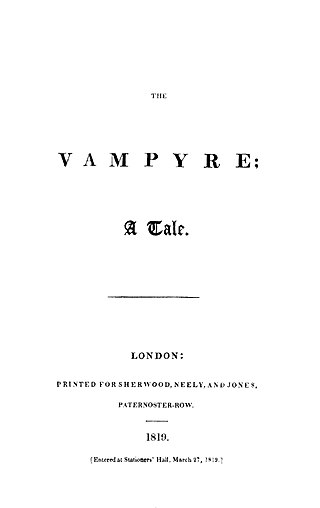
"The Vampyre" is a short work of prose fiction written in 1819 by John William Polidori, taken from the story Lord Byron, told as part of a contest among Polidori, Mary Shelley, Lord Byron, and Percy Shelley. The same contest produced the novel Frankenstein; or, The Modern Prometheus. "The Vampyre" is often viewed as the progenitor of the romantic vampire genre of fantasy fiction. The work is described by Christopher Frayling as "the first story successfully to fuse the disparate elements of vampirism into a coherent literary genre."
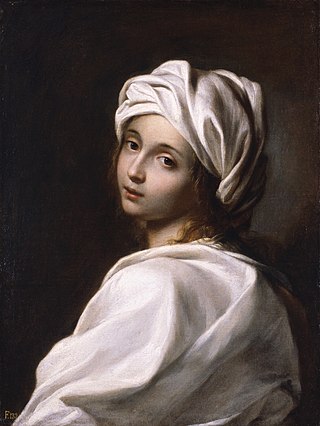
Beatrice Cenci was a Roman noblewoman imprisoned by her father, who repeatedly raped her. To escape the abuse and get away from the house, she killed him. The story of the murder and what led up to it shocked Europe. Despite outpourings of public sympathy, Beatrice Cenci was beheaded in 1599 after a lurid murder trial in Rome that gave rise to an enduring legend about her.
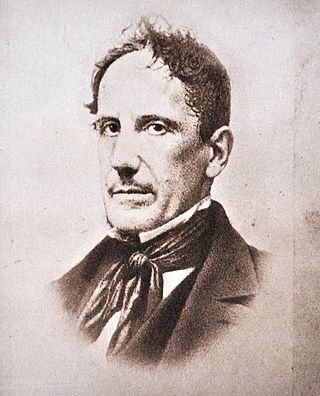
Giuseppe Francesco Antonio Maria Gioachino Raimondo Belli was an Italian poet, famous for his sonnets in Romanesco, the dialect of Rome.

ABBA ABBA is the 22nd novel by English author Anthony Burgess, published in 1977. It consists of two parts: the first is about the last months in the life of John Keats and his encounters with the Roman (dialectal) poet Giuseppe Gioacchino Belli. The second presents an English translation of a sequence of blasphemous sonnets by Belli.

The Centaur is a novel by John Updike, published by Alfred A. Knopf in 1963. It won the U.S. National Book Award for Fiction. Portions of the novel first appeared in Esquire and The New Yorker.

Prince of Foxes is a 1947 historical novel by Samuel Shellabarger, following the adventures of the fictional Andrea Orsini, a captain in the service of Cesare Borgia during his conquest of the Romagna.

Tremor of Intent: An Eschatological Spy Novel (1966), by Anthony Burgess, is an English espionage novel.

Frankenstein; or, The Modern Prometheus is an 1818 novel written by English author Mary Shelley. Frankenstein tells the story of Victor Frankenstein, a young scientist who creates a sapient creature in an unorthodox scientific experiment. Shelley started writing the story when she was 18, and the first edition was published anonymously in London on 1 January 1818, when she was 20. Her name first appeared in the second edition, which was published in Paris in 1821.

Percy Bysshe Shelley was a British writer who is considered as one of the major English Romantic poets. A radical in his poetry as well as in his political and social views, Shelley did not achieve fame during his lifetime, but recognition of his achievements in poetry grew steadily following his death, and he became an important influence on subsequent generations of poets, including Robert Browning, Algernon Charles Swinburne, Thomas Hardy, and W. B. Yeats. American literary critic Harold Bloom describes him as "a superb craftsman, a lyric poet without rival, and surely one of the most advanced sceptical intellects ever to write a poem."

Mary Wollstonecraft Shelley was an English novelist who is best known for writing the Gothic novel Frankenstein; or, The Modern Prometheus (1818), which is considered an early example of science fiction. She also edited and promoted the works of her husband, the Romantic poet and philosopher Percy Bysshe Shelley. Her father was the political philosopher William Godwin and her mother was the philosopher and women's rights advocate Mary Wollstonecraft.

To Dorothy a Son is a black and white 1954 British gentle comedy film in the form of a farce directed by Muriel Box and starring Shelley Winters, John Gregson and Peggy Cummins. Known in the U.S. as Cash on Delivery, it is based on the 1950 play To Dorothy, a Son by Roger MacDougall which had enjoyed a lengthy run in the West End. It was shot at Elstree Studios near London with sets designed by the art director George Provis. It was distributed in America by RKO Pictures in January 1956.
Liana Burgess was an Italian translator and literary agent who was the second wife of English writer Anthony Burgess. Burgess and Macellari had embarked on an affair while Burgess was married to his first wife, and Macellari gave birth to a son nine months after their meeting. The couple became tax exiles in the late 1960s, living in Malta and Italy, and spent several years in the United States. They finally settled in Monaco. Macellari played an important role in Burgess's later literary career, negotiating film rights and acting as his European literary agent, and translating his novels.

Revolutionary Sonnets and Other Poems is a posthumous collection of the short poetry written by Anthony Burgess. Compiled and edited by Kevin Jackson, who also provided a short introduction to the text, the book purports to collect most if not all of the poems published under the names F. X. Enderby, John Burgess Wilson, or Anthony Burgess, as well as selections from longer verse works by Burgess.

















